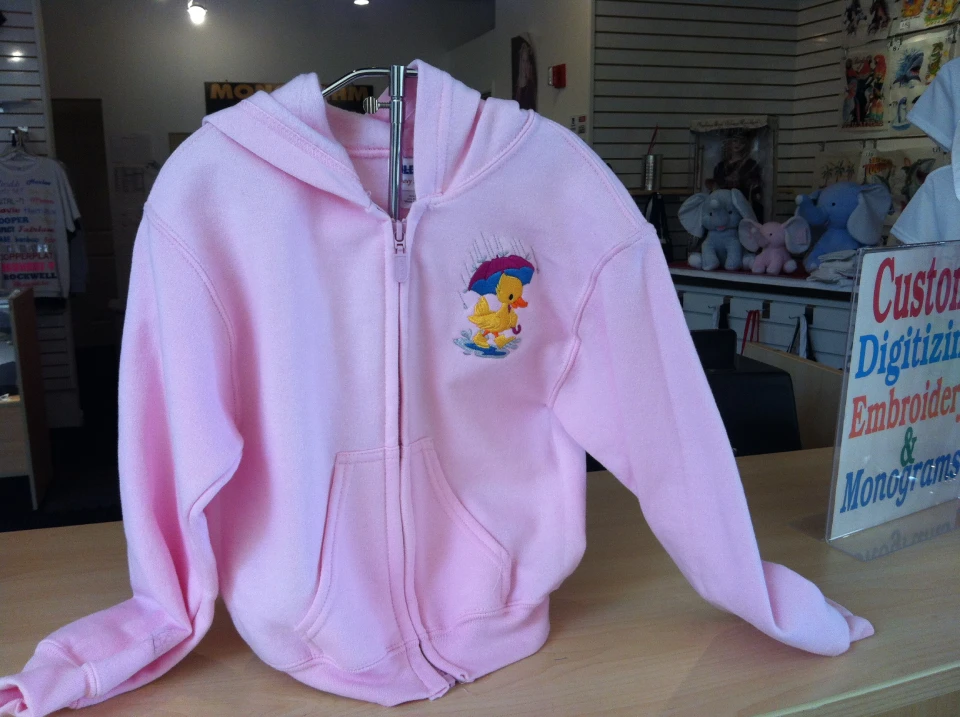Customized Scrubs with Embroidery for a Specialist Appearance
Wiki Article
The Art of Custom Needlework: Opening the Keys to Creating Unique and Unforgettable Designs
The keys to developing custom embroidery layouts that astound the eye and leave a long-term impact lie in a delicate balance of strategy, creativity, and attention to information. As we dive right into the globe of customized embroidery, we uncover the nuanced interaction between thread option, stitch intricacy, and design customization that raises a plain garment to a work of art.Choosing the Right Needlework Threads
When choosing embroidery strings, what key factors should you take into consideration to ensure the most effective results for your personalized designs? The option of needlework thread is crucial in figuring out the last end result of your embroidered layout. One of the main factors to consider is the product of the thread. Different materials such as cotton, polyester, rayon, and silk provide differing degrees of luster, toughness, and structure. It is important to pick a string product that enhances the material you are embroidering on and aligns with the wanted look of the style.
Moreover, the weight or density of the thread plays a considerable function in the appearance of the needlework. Thicker threads can add dimension and texture to your style, while finer strings are excellent for detailed information and tiny text. Furthermore, thinking about the color fastness and washability of the string is critical to make sure that your custom layouts keep their top quality and vibrancy gradually. By very carefully examining these factors and picking top quality threads that meet your specific demands, you can enhance the aesthetic charm and longevity of your stitched creations.
Checking Out Different Stitch Methods
To look into the realm of 'Discovering Different Stitch Methods', one must realize the complexities and nuances that each sewing method offers the art of embroidery. Various stitch techniques not only include visual interest but also contribute to the general appearance and dimension of the style. One preferred stitch strategy is the satin stitch, which entails closely jam-packed parallel stitches to develop a smooth and glossy surface, ideal for filling up in forms and creating strong outlines.On the various other hand, the backstitch is a flexible strategy frequently made use of for describing and adding fine details. It includes sewing in reverse to create a solid line of needlework. Furthermore, the French knot stitch includes a responsive component to layouts, perfect for creating distinctive accents like blossom centers or decorative touches.
Checking out various stitch methods permits embroiderers to play with light, shadow, and depth within their styles, raising the aesthetic appeal and creative high quality of their needlework tasks. By mastering different sewing approaches, one can open endless opportunities for creating unique and unforgettable personalized embroidery items.
Incorporating Personalized Layout Components
Having checked out the details of different stitch techniques such as the satin stitch, backstitch, and French knot, the emphasis now moves towards integrating tailored layout aspects in custom-made embroidery tasks. Individualized design components play a crucial duty in making needlework jobs really unique and memorable. One way to incorporate personalization is by adding initials, names, or substantial days to the design. This not only includes an individualized touch however also enhances the sentimental value of the needlework piece.Another method to include individualized style aspects is by including signs or concepts that hold special meaning to the recipient or reflect their interests and personality. Including a favored flower, animal, or hobby-related symbol can make the needlework layout more purposeful and tailored. In addition, picking shades that reverberate with the recipient or straighten with the designated style can further custom tailored tuxedo improve the customization of the embroidery project.
Understanding the Art of Shade Sychronisation

One secret element of color coordination is recognizing shade theory. This consists of knowing just how different colors engage with each other, the feelings they convey, and how they can be incorporated to create aesthetically appealing styles. By using color theory principles, embroiderers can produce unified shade schemes that improve the total look of the design.
Furthermore, taking note of comparison is vital in shade control. Making use of contrasting shades can assist particular components of the layout pop, boost readability, and produce an aesthetically vibrant embroidery piece. By mastering the art of color coordination, embroiderers can boost their styles and produce memorable pieces that reverberate with customers and audiences alike.
Enhancing Texture With Advanced Embroidery Stitches

French knots, for example, are excellent for including small, raised dots to your style, imitating the appearance of grains or developing a textured surface. Bullion knots, on the other hand, can be made use of to develop twisted, ropelike elements that add a lavish feel to the needlework. Seed stitching involves small, scattered stitches that can complete areas with a polychromatic structure, while turkey job produces cosy, dimensional accents reminiscent of animal hair or vegetation. Explore these advanced embroidery stitches enables you to press the borders of standard embroidery and produce absolutely distinct and aesthetically attractive textures in your layouts.
Verdict
To conclude, the art of custom-made needlework involves a combination of choosing the ideal strings, checking out numerous stitch strategies, including personalized layout components, grasping shade coordination, and improving structure with sophisticated stitches. By comprehending and carrying out these key elements, embroiderers can create unique and memorable designs that display their creative thinking and skill. Embroidery lovers can unlock the secrets to developing attractive and bespoke pieces that stand apart and leave a long lasting perception.Report this wiki page